For generations, Mohawk Indians have left their reservations in or near Canada to raise skyscrapers in the heart of New York City.
High atop a New York University building one bright September day, Mohawk ironworkers were just setting some steel when the head of the crew heard a big rumble to the north. Suddenly a jet roared overhead, barely 50 feet from the crane they were using to set the steel girders in place. “I looked up and I could see the rivets on the plane, I could read the serial numbers it was so low, and I thought ‘What is he doing going down Broadway?’” recalls the crew’s leader, Dick Oddo. Crew members watched in disbelief as the plane crashed into one of the towers of the World Trade Center, just 10 blocks away.
At first, Oddo says, he thought it was pilot error. He got on his cell phone to report the crash to Mike Swamp, business manager of Ironworkers Local 440, but he began to wonder. Then another jet flew by. “When the plane hit the second tower, I knew it was all planned.”
Like Oddo, most of the Mohawk crews working in New York City on Sept. 11, 2001, headed immediately to the site of the disaster. Because many of them had worked on the 110-story World Trade Center some three decades earlier, they were familiar with the buildings and hoped they could help people escape faster. Fires were raging in the towers and the ironworkers knew that steel weakens and eventually melts under extreme heat. They helped survivors escape from the threatened buildings, and when the towers came crashing down, they joined in the search for victims.
In the months that followed, many Mohawk ironworkers volunteered to help in the cleanup. There was a terrible irony in dismantling what they had helped to erect: Hundreds of Mohawks had worked on the World Trade Center from 1966 to 1974. The last girder was signed by Mohawk ironworkers, in keeping with ironworking tradition.
Walking the iron
Mohawks have been building skyscrapers for six generations. The first workers came from the Kahnawake Reservation near Montreal, where in 1886 the Canadian Pacific Railroad sought to construct a cantilever bridge across the St. Lawrence River, landing on reservation property. In exchange for use of the Mohawks’ land, the railroad and its contractor, the Dominion Bridge Co., agreed to employ tribesmen during construction.
The builders had intended to use the Indians as laborers to unload supplies, but that didn’t satisfy the Mohawks. Members of the tribe would go out on the bridge during construction every chance they got, according to an unnamed Dominion Bridge Co. official quoted in a 1949 New Yorker article by Joseph Mitchell (“The Mohawks in High Steel,” later collected in the 1960 book Apologies to the Iroquois, by Edmund Wilson). “It was quite impossible to keep them off,” the Dominion official said.
The official also claimed the Indians demonstrated no fear of heights. If they weren’t watched, he said, “they would climb up and onto the spans and walk around up there as cool and collected as the toughest of our riveters, most of whom at that period were old sailing-ship men especially picked for their experience in working aloft.”
Impressive perhaps, but Kahnawake ironworker Don Angus explains that his ancestors back then were just teenagers daring each other to climb the 150-foot structure and “walk the iron.” Company workers tried to chase them off the bridge, Angus says. “I know that for a fact. They were getting in the way.”
The Indians were especially interested in riveting, one of the most dangerous jobs in construction and, then as now, one of the highest paid. Few men wanted to do it; fewer could do it well, and in good construction years there were sometimes too few riveters to meet construction demand, according to the New Yorker article. So the company decided to train a few of the persistent Mohawks. “It turned out that putting riveting tools in their hands was like putting ham with eggs,” the Dominion official declared. “In other words, they were natural-born bridge-men.” According to company lore, 12 young men—enough for three riveting gangs—were thus trained.
After the Canadian Pacific Bridge was completed, the young Mohawk ironworkers moved on to work on the Soo Bridge, which spanned the St. Mary’s River connecting Sault Ste. Marie, Ontario, and Sault Ste. Marie, Mich. Each riveting gang brought an apprentice from Kahnawake to learn the trade on the job. When the first apprentice was trained, a new one came up from the reservation, and by 1907 more than 70 skilled structural ironworkers from the reservation were working on bridges.
Then tragedy struck. American structural engineer Theodore Cooper had designed the Quebec Bridge, a cantilevered truss bridge that would extend 3,220 feet across the St. Lawrence River above Quebec City. Because the Quebec Bridge Co. was strapped for cash, the company was eager to accept his design, which specified far less steel than was typical for a bridge of that size.
As the bridge grew, disturbing bends in the structure were explained away by Cooper and John Deans, chief engineer of Phoenix Bridge, the company building the bridge, as damage probably caused offsite before the beams were set in place. No one wanted to admit that the expensive bridge appeared increasingly unable to bear its own weight.
On Aug. 29, 1907, the bridge collapsed. Of the 75 men who died, 33 were Mohawks—about half of the tribe’s high-steel workers. But the tragedy didn’t turn Mohawks away from ironworking. According to an elderly Mohawk quoted in the 1949 New Yorker article, “It made high steel much more interesting to them. It made them take pride in themselves that they could do such dangerous work. After the disaster . . . they all wanted to go into high steel.” Less than 10 years later, the American Board of Indian Commissioners claimed that 587 of the 651 men in the tribe now belonged to the structural steel union.
But to ensure that so many tribesmen were never again killed in one accident, the Mohawk women insisted that the men split into smaller groups to work on a variety of building projects. That’s when they began booming out—tribal slang for scattering to find high-steel work away from home, in New York City and other distant places.
Gangs of New York
Although Mohawks had worked in New York City as early as 1901, it wasn’t until the 1920s that they came in large numbers, working in tight-knit four-man gangs to feed the demand for workers during a massive building boom, later stoked by Depression-era public works and then post-World War II prosperity. They came eventually not only from Kahnawake, but from other reservations as well, including Akwesasne (or Akwasasne) in upstate New York, near Canada.
Mohawk high-steel men worked on virtually every big construction project in New York City: the Empire State Building, the RCA Building, the Daily News Building, the Bank of Manhattan Building, the Chrysler Building, the United Nations, and Madison Square Garden. They also continued to build bridges, including the George Washington Bridge, the Bayonne Bridge, the Triborough Bridge, the Henry Hudson Bridge, the Hell’s Gate Bridge, the Bronx-Whitestone Bridge, and many more.
During the heady boom times of the first half of the 20th century, construction of steel structures required three types of work crews: raising gangs, fitting-up gangs, and riveting gangs.
The steel columns, beams, and girders arrived at the construction site already cut to size with holes for rivets, and code marks indicated where each was to be placed. The raising gang used a crane to lift the steel pieces and set them in place, loosely joining them with a few temporary bolts. The fitting-up gang tightened the pieces, ensuring that they were plumb, and inserted more temporary bolts. Then it was time for the four-man riveting gangs, where the Mohawks excelled. Because of the dangerous nature of the job, riveters preferred to work with partners they trusted; for Mohawks, this meant relatives and fellow tribesmen.
In the riveting gang, the heater fired the rivets in a portable, coal-burning forge until they were red-hot. With tongs he then tossed a rivet to the sticker-in, who caught it in a metal can as he stood with the other gang members on narrow scaffolding beside the steel. The bucker-up removed one of the temporary bolts and the sticker-in then shoved the hot rivet into the empty hole. The bucker-up braced the rivet with a dolly bar while the riveter used a pneumatic hammer to turn the hot and malleable stem of the rivet into a permanent head, securing the steel. The men took turns at the four tasks, making sure to give the riveter a regular break from his bone-jarring job.
Though ironworking technology has improved over the years, ironworkers still die on the job at a rate of 35 to 50 fatalities each year—75 percent of them from falls. Akwesasne ironworker Oddo lost his grandfather to a fatal fall from the high steel; his father died on his 25th anniversary in ironworking, driving home from a construction site. Many graves of fallen steelworkers at Kahnawake are marked by crosses made of steel girders.
The pay continues to bring the Mohawks back: Ironworkers today earn about $35 an hour plus benefits, which in busy times yields $65,000 to $70,000 a year.
The highs and lows of steel
In 1927 a federal court judge, citing the 150-year-old Jay Treaty, ruled that the Mohawks could pass freely between Canada and the United States since their territory had included portions of both nations. But because the drive from New York City to Kahnawake took almost 12 hours, many of the men instead moved their families to Brooklyn.
By 1960, around 800 Mohawks lived there. A Mohawk steelworker conclave had sprung up near Fourth Avenue and Atlantic Avenue, with grocery stores stocking their favored o-nen-sto cornmeal and churches offering services in their native language.
But just 10 years later, few Mohawks remained. The new Adirondack Northway had halved the time it took to drive between New York and Kahnawake, and along with a growing pride in Indian culture—and rising crime in New York City—the shorter commute convinced most of the Mohawk ironworkers that it was time to go home.
Today most of the high-steel Mohawks still live in the city during the week, often sharing lodgings, and drive home to their families in Kahnawake and Akwesasne every weekend. But work has been slow since the collapse of the World Trade Center towers, and recent improvements in reinforced concrete have made it more attractive in some ways than steel: It goes up faster, requires less height for the same number of floors, is easier to modify during construction, and—most important in the wake of 9/11—it’s more resistant to heat.
On the other hand, steel is still considerably stronger than concrete, and steel-framed buildings are easier to modify to suit the needs of successive tenants. Because of that, many experts say that steel structures will never completely disappear.
That suits the Mohawks, who after six generations have made high steel a tribal tradition. “It makes you a better man,” says Swamp.
Renee Valois wrote about American mummies in the May/June issue of The History Channel Magazine.
A Mohawk Skywalking Tradition
Why would people with deep traditions centered in the earth embrace the trade of building skyscrapers in a city, high above it? Indeed, for decades anthropologists, construction company executives, and even the Mohawks themselves have debated why the tribesmen originally became skywalkers and why they remain high-steel workers today.
Probably the most controversial assertion originated with an official at the Dominion Bridge Co., which trained the first Mohawk ironworkers in 1886. He reportedly claimed that they had no fear of heights and even compared them to sure-footed mountain goats.
Others have suggested that the Indians’ tradition of walking one foot in front of the other on narrow logs over rivers suited them for walking the thin girders of a bridge or a skyscraper. This suggests that they have a natural balance and agility that is probably fictional: Mohawks don’t die in lower numbers than other ironworkers.
Anthropologist Morris Frielich suggests a cultural lure for ironworking: He compares high-steel Mohawks to warriors who risked death and returned with booty. Some anthropologists have also suggested that the risky work gave tribesmen a chance to test and display their courage.
While many Mohawk ironworkers admit to taking pride in doing a dangerous and important job, they dispute the idea that they’re not afraid of heights. Kahnawake ironworker Don Angus says Mohawks simply “have more respect for heights. You’ve got to watch it up there.”
On the other hand, some historians and some Mohawks cite the tribes’ ancient tradition of building longhouses as proof that building has always been in the blood. “It’s a hand-me-down trade, and it’s tradition,” says Angus. “My grandfather and his grandfather worked on iron.” Akwesasne ironworker Mike Swamp agrees: “My father was an ironworker. My son is an ironworker. It’s a family tradition.”
SOURCE
Photos Copyright © 2012 David Grant Noble


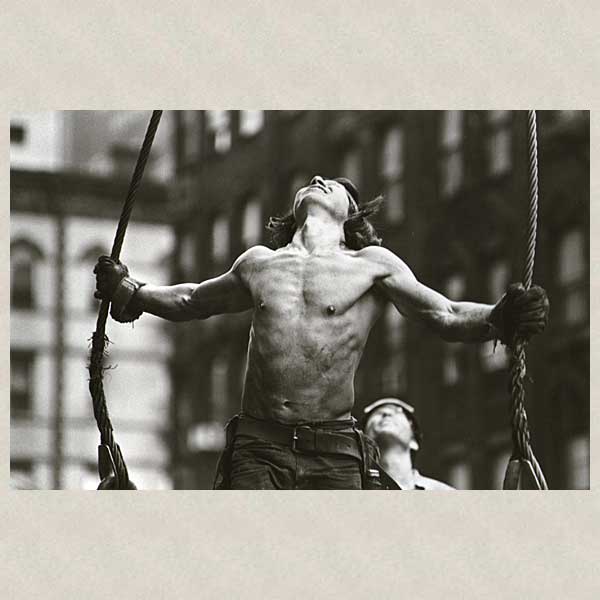
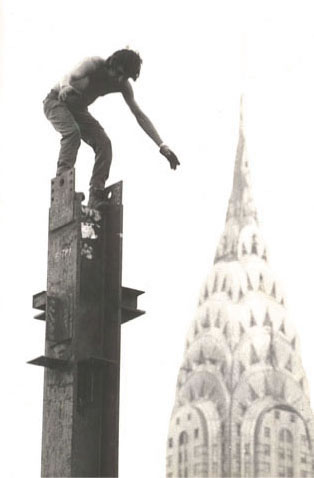
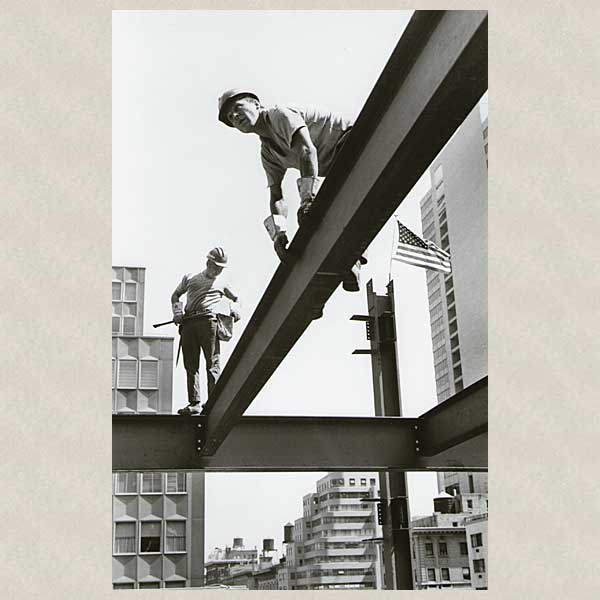
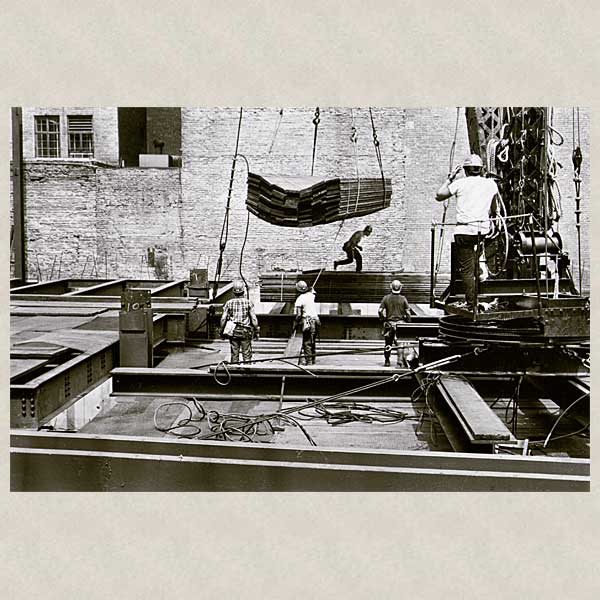
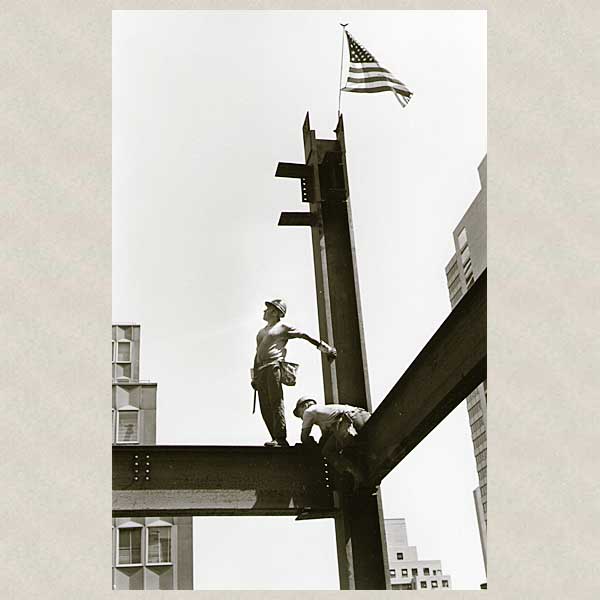
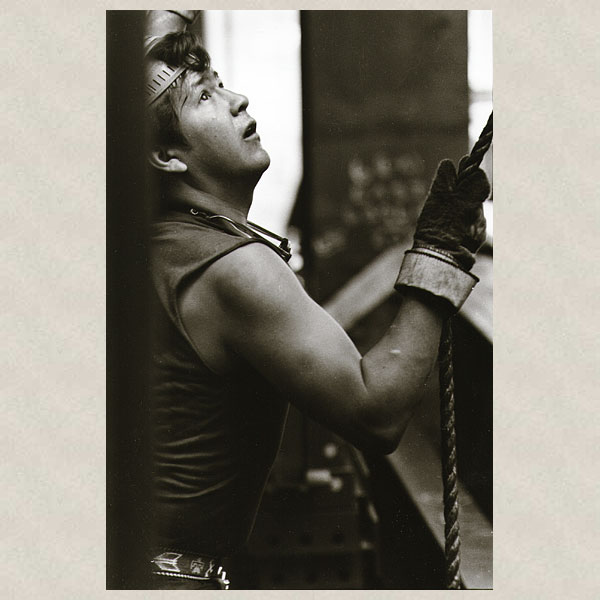
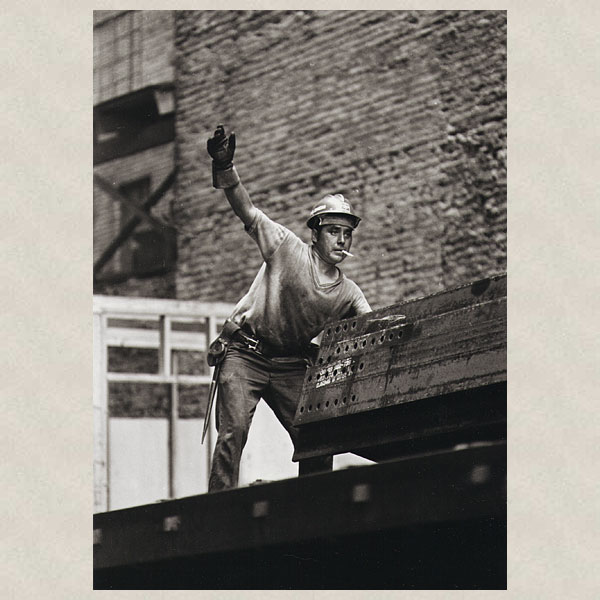
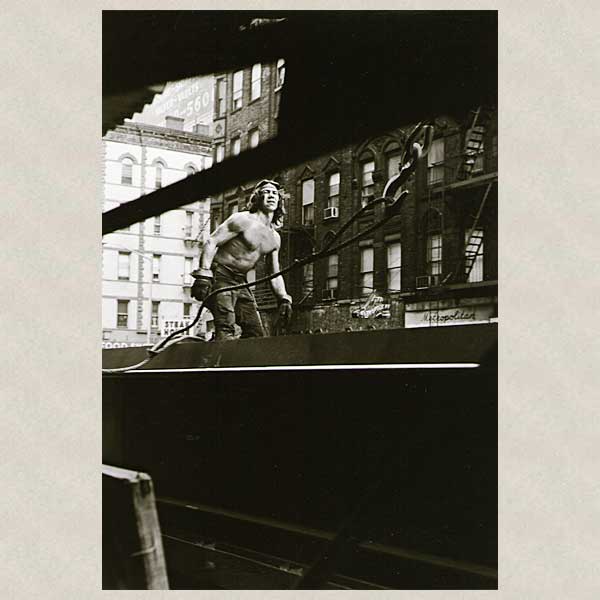






An ode to the working men and women that built this country.
On Aug. 29, 1907, the bridge collapsed. Of the 75 men who died, 33 were Mohawks—about half of the tribe’s high-steel workers.
I was thinking of posting an article for labor day and didnt get around to it. This is a good one.
Thanks JR, I thought this would really fit ''Labor Day''
Excellent article, Kavika. There are many Native Americans from various Tribes across America who have made huge contributions to America that have gone unnoticed and/or unmentioned. It is truly wonderful that their contributions both here in America and abroad, during peace time and war, are finally being acknowledged.
I agree RW...We are the first thread in a mosaic that makes up America.
Of all I have read on NT......this Is the most interesting.
My entire family were blue collar workers. Thanks to them all.
Happy that you enjoyed the article magnoliaave.
Dear Friend Kavika and all contributors here.
Great article.
Super commentary.
Timely topic.
Credit earned is credit due.
As we say in Yiddish, "Schverah arbeit ist far die Neshumme git".
"Hard work is good for the soul".
As my Father taught us growing up, "Going to work every day is like taking a shower. When you stop doing it, you begin to stink".
True then, true now.
Peace and Abundant Blessings to One and All. One this day, a shout out to labor everywhere.
Enoch.
Thanks niijii.
''As my Father taught us growing up, "Going to work every day is like taking a shower. When you stop doing it, you begin to stink".
Haha, how true.
Thank you Kavika for reminding us what today is about and sacrifices made from it's 1st citizens. These guys were awesome! I'm sure I'd pee my pants if I had to do a minuscule of what they did.
A break from all the political nonsense Pj..
A salute to the real Americans, the ''working man and women''..
Thank you.
Your most welcome dave.
The beginning of the Skywalkers goes back to the Kahnawake Reserve in Quebec, Canada, (a reserve that became more well known through its dispute over the expansion of a golf course over sacred land, and documented in an award-winning documentary by Alanis Obomsawin). I had learned of the fantastic ability of the Indians' for working at such heights back in my school days, and admit that I have throughout my life been uncomfortably nervous at heights.
But what amazed me even more was that when I started teaching English at a private high school in China, a whole chapter in the text book I was using was dedicated to describing and relating stories about the Indian high steelworkers. I can still recall a story in it about an Indian steelworker who said that it was ironic that his grandfather had worked on contructing the Twin Towers, and now he was working on clearing the debris of it from 9/11.
The Oka Wars of 1990. A watershed moment in Canadian history Buzz.
As stated in the article about the ability of Indians to work at high altitudes without worry is kind of a interesting myth, or is it a myth. I know that I have no fear of heights nor do any Indians I know. So is it a myth or something else.
Interesting that in China they have information on it in a text book. The Chinese probably know more about First Nations and American Indians than Canadians and Americans do.
Thanks for stopping by Buzz.
I remember seeing on TV the sky walkers talk about cleaning the debris after 9/11 and how a generation before it was their family members who built it. I don't think that people give much thought to the men and women who use their hands in true labor.
Amazing photos to this article. Best read of the day. What a great way to send off Labor Day! Thank you Kavika.
Your welcome Perrie. We tend to forget what Labor Day is celebrating...
This song always reminded me of the working men and women of America.